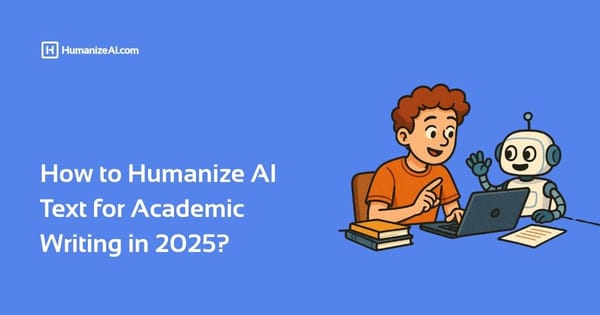How to Bypass AI Detector Tools in 2025 | Humanize AI Writing
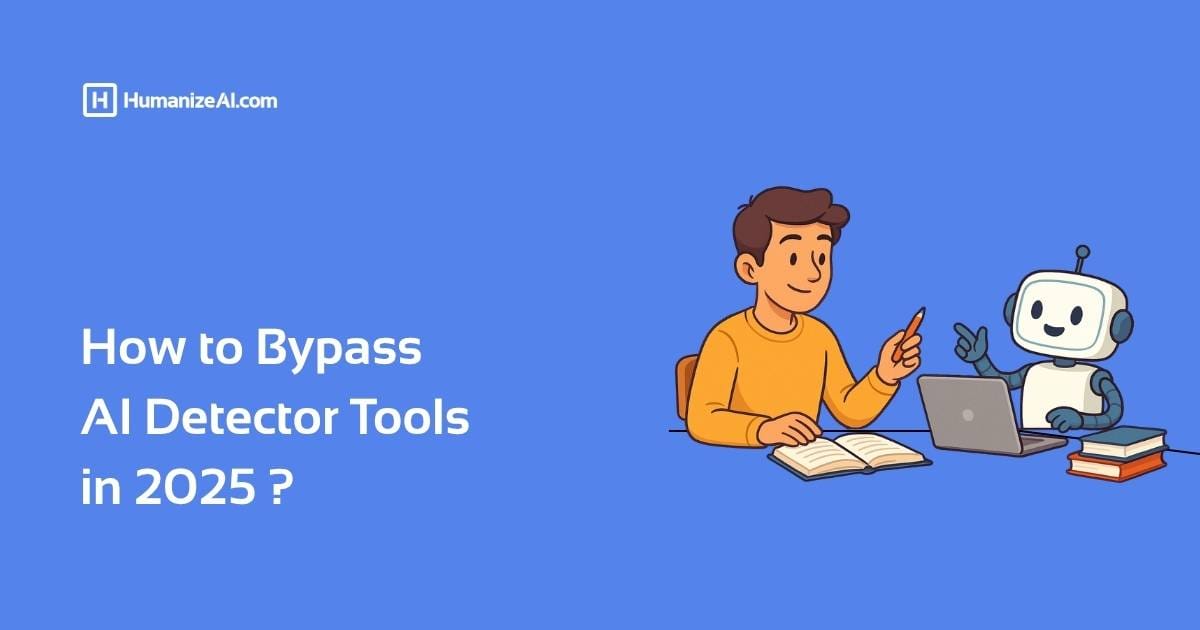
The boom in AI-assisted writing has changed how people create. Students, marketers, journalists, and researchers all rely on large language models to brainstorm, draft, and polish their work. But the same technology that makes writing easier has also created a strange new problem. Even clearly human-written text is now getting flagged by AI detectors. Professors have rejected student essays that were entirely original. Editors have seen authentic opinion pieces marked as artificial. Bloggers and business owners are watching organic traffic drop after their posts were flagged by algorithmic filters.
A recent analysis found that AI detectors can misclassify human writing in as many as half of the tested cases when the text is formal, academic, or heavily edited. That shows how unreliable these tools can still be.
Here, in this guide titled How to Bypass AI Detector Tools in 2025, we’re not promoting ways to trick the system. Instead, this article focuses on how to reduce false positives, write in a natural and authentic voice, and protect your credibility online. You’ll learn how AI detection works, why it sometimes fails, and what practical editorial habits make content feel unmistakably human. The goal is to help creators, students, and marketers keep their work trusted and visible, without crossing any ethical lines.
How AI Detectors Work in 2025
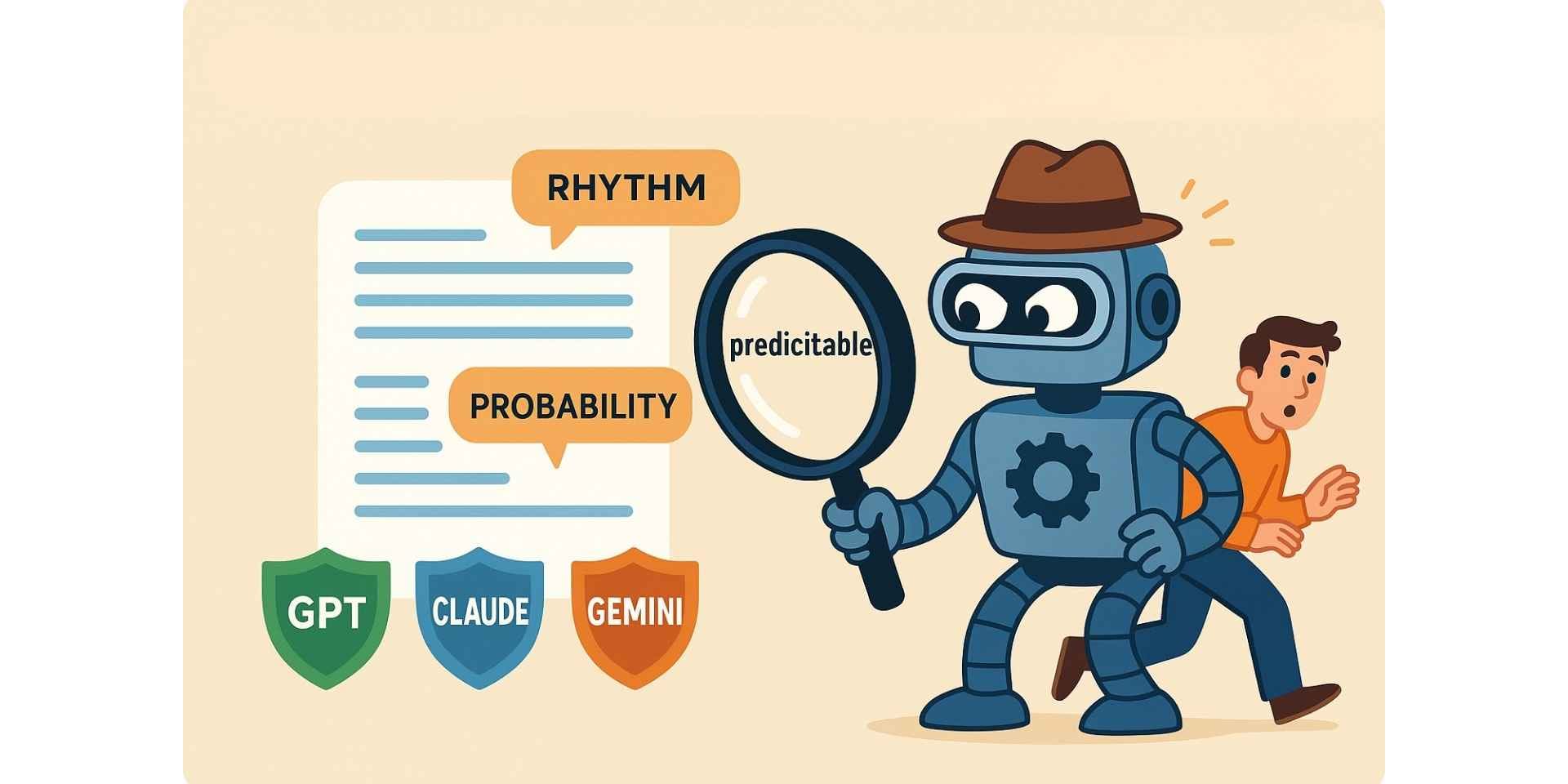
If you want to understand how to bypass AI detectors safely, it helps to know what they actually do. An AI detector tool scans text for patterns that seem too predictable or consistent to be human. These systems use AI detection software that measures rhythm, variation, and word probability to estimate if writing came from GPT, Claude, or Gemini.
Two main signals matter most: burstiness and perplexity. Burstiness checks how much sentence length and tone vary. Humans write unevenly; AI models sound smoother. Perplexity measures how predictable words are. Low perplexity can mean the sentence structure feels machine-generated.
| Signal | What It Checks | When Humans Get Flagged |
|---|---|---|
| Burstiness | Variation in sentence length | Polished or edited text loses rhythm |
| Perplexity | Predictability of words | Academic or formal tone appears AI-like |
That’s why even skilled writers sometimes trigger an AI content detector. The system mistakes clarity for automation. Searching for an AI detection remover or AI detector bypass won’t fix the cause. Instead, focus on human-style writing, shorter and longer sentences, natural pauses, idioms, and real opinions.
Tools like HumanizeAI (aka HumanizeAI.com make this process easier. They help writers rewrite and humanize AI text without breaking meaning or tone. Many professionals also explore best AI humanizer tools for deeper tone refinement and structure control
Why AI Detectors Fail in 2025

Even the best AI detection software isn’t perfect. In 2025, false positives remain a major problem. Many creators and students notice that human-written content still gets flagged by AI detector tools. The reason is simple: detectors look for mathematical patterns, not meaning.
AI content detectors study how predictable your text is. If you write clearly, use consistent grammar, or repeat key phrases for SEO, the algorithm might decide it’s AI. It doesn’t understand context, only probability. That’s why marketers, academics, and bloggers sometimes need to remove AI detection from text that was genuinely written by people.
| Cause of False Positive | Example | How to Fix It |
|---|---|---|
| Repetitive structure | SEO copy using the same transitions | Mix short and long sentences |
| Highly formal tone | Academic or legal writing | Add contractions and natural phrasing |
| Polished editing | Grammar-checked content | Re-read aloud to restore rhythm |
These small edits act like a practical AI detection remover. You aren’t cheating the system; you’re teaching it to recognise authentic style. Human writing includes emotion, pacing, and a few imperfections. When everything looks perfect, AI detectors assume automation.
Writers looking to fine-tune tone and structure can also explore best humanize AI tools, designed to improve natural readability while preserving meaning.
If you understand why detectors fail, you can write smarter, protect your credibility, and avoid unnecessary flags in both academic and online publishing.
How to Write Human-Style Content That Feels Authentic
If you want to bypass AI detector mistakes, the best strategy is simple: write like a person, not a program. Modern AI detection software looks for flat rhythm, perfect grammar, and predictable transitions. Real human writing includes personality, pauses, and small imperfections. Adding those qualities is how you Humanize AI Text and protect your work from false flags.
Start by thinking about rhythm. Vary your sentence length so some lines are short and others flow longer. This natural mix creates burstiness, a pattern AI content detectors expect from genuine writers. Next, use conversational language, add contractions, rhetorical questions, or even a touch of humour. It gives your piece the voice detectors usually miss.
Don’t forget emotion and experience. AI struggles to express lived moments, opinions, or sensory detail. Mention how something feels, looks, or sounds. A sentence like “I still remember rewriting my first blog until sunrise” instantly signals authenticity.
| Technique | Why It Works |
|---|---|
| Mix sentence lengths | Restores natural burstiness |
| Use personal perspective | Adds human unpredictability |
| Read aloud before publishing | Reveals robotic flow or tone |
You can also use AI responsibly to help with editing. Tools such as HumanizeAI.com is an AI humanizer, they rewrite AI-generated drafts in a more natural voice without losing meaning. Use them after drafting, not before. This is also crucial for improving visibility through best AI search visibility tools, since natural flow supports SEO and AEO ranking.
The goal isn’t to create undetectable AI text but to craft writing that feels alive, personal, and trustworthy. Ethical AI writing means combining smart tools with your own creativity. When you focus on genuine storytelling and flow, you automatically bypass AI detector confusion, because no algorithm can fully imitate a real voice.
Practical Steps to Reduce AI Detection in Your Workflow
Knowing how detectors think is useful, but applying that knowledge is what really matters. Here’s how you can build a simple workflow that reduces false positives and keeps your writing authentic.
Step 1: Start with your own outline
Even if you use GPT or Claude for brainstorming, begin with a human outline. Your structure and ideas add unique unpredictability that AI detectors respect. It also ensures your content sounds personal from the start.
Step 2: Draft freely, edit later
When you edit as you write, the rhythm becomes too clean. Write first, then review. This preserves burstiness and helps bypass AI detector errors caused by overly polished phrasing.
Step 3: Edit with intent, not automation
Avoid over-using grammar correctors that make every sentence identical. Instead, read your text aloud. Where it sounds too smooth, add transitions, natural pauses, or rhetorical questions. That’s how to humanize AI text in practice.
Step 4: Use an AI humanizer tool smartly
Tools like HumanizeAI.com act as ethical assistants rather than cheats. They help rewrite to bypass AI detector confusion by adjusting tone, flow, and variety. Think of them as editors that restore human-style writing, not as AI detection removers.
Step 5: Check, don’t chase
Run your final draft through an AI content detector once. If it’s flagged, fix the rhythm instead of trying to remove AI detection from text entirely. Focus on clarity, not tricking software.
Following workflows similar to tips to avoid AI detection while writing helps maintain both originality and tone authenticity.
Top 3 AI Tools to Humanize AI-Generated Content in 2025
| Tool | Key Features | Starting Price | Best For |
|---|---|---|---|
| HumanizeAI.com | Advanced rewriting with tone analysis, built-in AI detector, plagiarism and readability checks, long-form support | $7/month | Writers and marketers who need natural, undetectable, SEO-ready content |
| QuillBot | Fast paraphrasing, grammar and fluency tools, multiple rewrite modes, citation and summarizer options | $10/month | Quick edits, rephrasing short AI text, improving sentence flow |
| Grammarly | Tone and clarity rewrites, rhythm improvement, plagiarism detection, engagement analysis | $12/month | Final polishing, professional tone refinement, everyday editing |
AI writing tools have become incredibly powerful, but they often produce text that feels too smooth, structured, or robotic. To make AI-generated content sound natural and reader-friendly, writers now use AI humanizers, platforms that edit, rewrite, and fine-tune tone to make writing feel genuinely human. Below are the top three tools leading this trend in 2025.
1. HumanizeAI.com
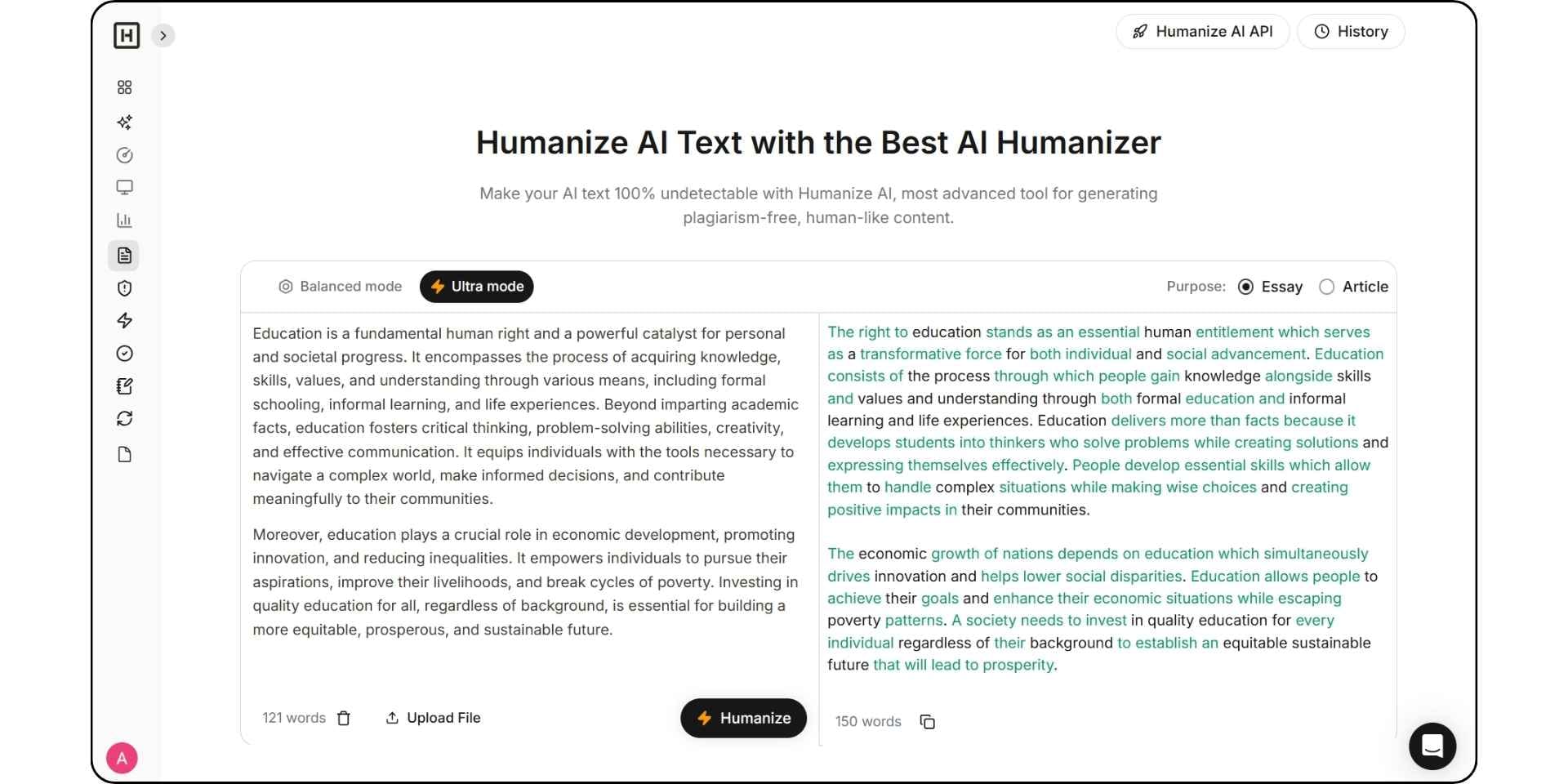
HumanizeAI (aka HumanizeAI.com) is currently the most advanced and complete AI humanizer available. It combines rewriting, tone analysis, and built-in detection checks to turn any AI-generated draft into fluent, human-style writing. The system analyses perplexity, rhythm, and vocabulary variety before reconstructing sentences that sound authentic while preserving meaning. It’s ideal for bloggers, marketers, and professionals who rely on AI writing but want their content to remain natural and compliant.
Key Features:
• Balanced and Ultra Humanization modes for different content goals
• Integrated grammar, plagiarism, and readability checks
• Built-in AI detector and AI visibility tracker
• Dedicated Essay and Article modes for optimized academic and professional outputs
• Support for long-form content and export-ready formatting
Pricing:
HumanizeAI.com offers a free starter plan with limited words per month. Paid plans begin with flexible word packages and scale up for professional and enterprise users, offering more capacity and advanced visibility analytics.
Why choose it:
It delivers consistent results, reduces false detection flags, and optimizes content for both human readers and modern AI-overview engines like Gemini and ChatGPT.
2. QuillBot
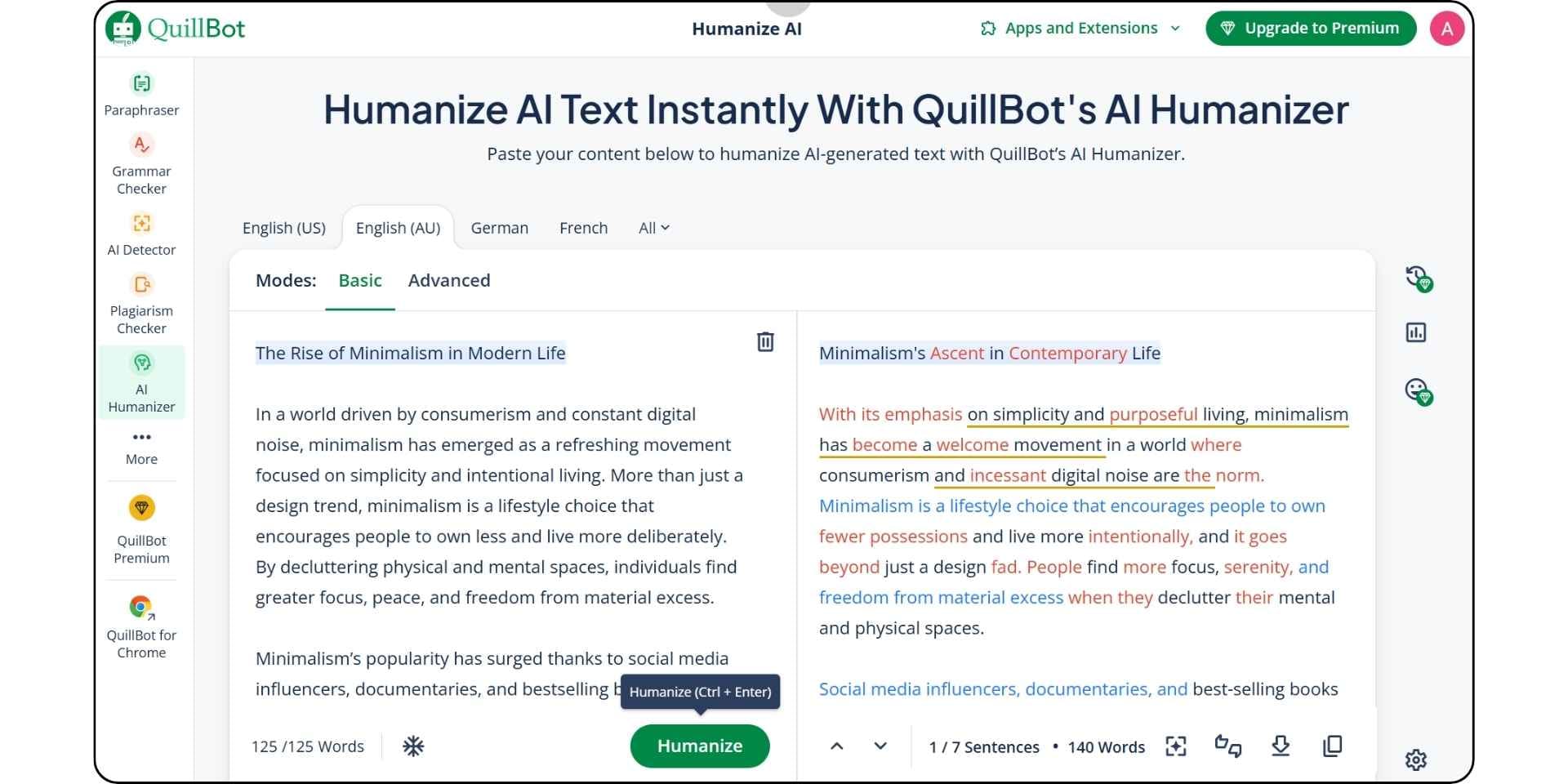
QuillBot remains a favourite for quick rewriting and short-form editing. It helps users rephrase sentences, change tone, and replace repetitive wording to make text more organic. While it’s not a full humanizer like HumanizeAI.com, it is fast, simple, and effective for quick adjustments that humanize AI text.
Key features:
• Multiple rewrite modes: Standard, Creative, and Fluency
• Built-in grammar and spell checking
• Citation generator and summarizer tools
• Chrome extension and Word integration
Pricing:
Free access is available with daily limits. Premium plans start around $10 per month with unlimited paraphrasing and advanced rewriting options.
Why choose it:
Ideal for writers who want fast editing support and smoother readability without complex interfaces.
3. Grammarly
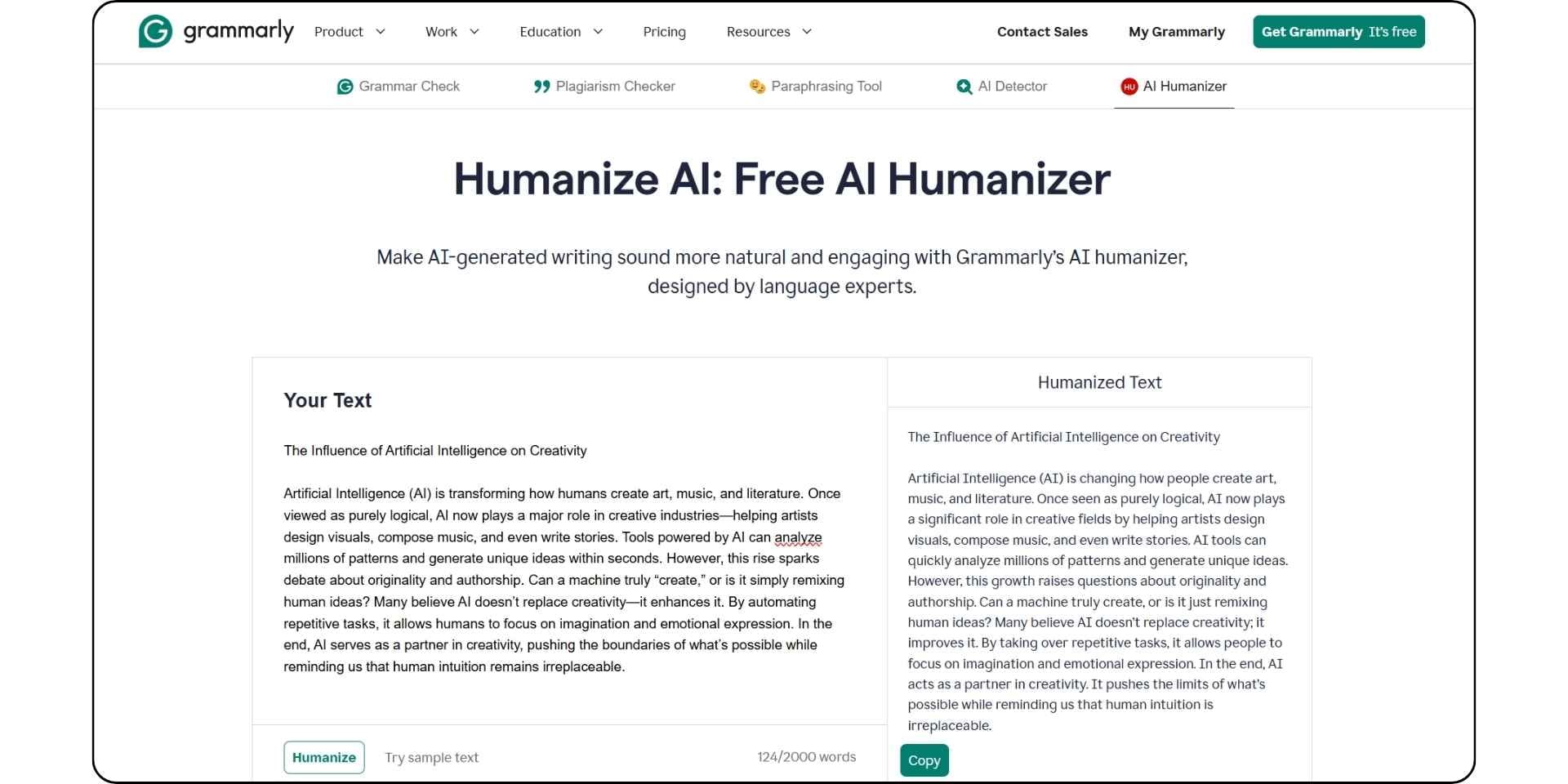
Grammarly is more than a grammar checker; it’s now a writing assistant that subtly helps bypass AI detector flags by improving tone, variety, and emotion in your sentences. Its tone-suggestion system recommends natural phrasing that adds warmth and flow.
Key features:
• Advanced tone and clarity suggestions
• Sentence rewrites for natural rhythm
• Integrated plagiarism detection
• AI-powered clarity and engagement metrics
Pricing:
A free plan covers basic grammar and tone detection. Premium plans start around $12 per month with advanced rewriting, tone control, and full integration into browsers and office tools.
Why choose it:
Perfect for professionals, students, and marketers who need a lightweight yet reliable way to refine AI-assisted writing into clear, polished content.
How to Bypass AI Detectors Using Humanize AI
HumanizeAI.com makes the process of transforming AI-generated writing into authentic, human-sounding text simple and fast. Whether your draft comes from ChatGPT, Claude, Gemini, or another AI generator, you can easily refine it into natural, undetectable content in just a few moments.
Step 1: Add Your AI-Generated Text
Start by copying the content you produced with any AI model and paste it directly into the HumanizeAI.com's AI Humanizer. The tool immediately analyses sentence flow, tone, and structure to prepare it for rewriting.
Step 2: Select a Mode
HumanizeAI.com offers two main options. Balanced Mode performs lighter adjustments, keeping your original message intact while improving readability. Ultra Mode applies a deeper rewrite that’s designed to pass the most advanced AI detectors without changing your intent or meaning.
Step 3: Generate Your Humanized Version
Click the Humanize button to begin processing. Within seconds, the system rewrites your text using natural phrasing and rhythm, creating content that reads as if it were written entirely by a person.
Step 4: Review the Output
After generation, you can easily compare your original and refined versions. HumanizeAI.com highlights differences in tone, pacing, and sentence variety so you can confirm that the new text feels authentic and polished.
Step 5: Copy and Finalize
Once you are satisfied with the result, copy the humanized text and use it wherever you need — blog posts, academic work, marketing copy, or research materials. The platform also allows optional checks for grammar, plagiarism, and AI detection accuracy to ensure your final output meets every requirement.
Pro Tip: Ultra Mode is best for formal or academic use where detection is strict, while Balanced Mode works perfectly for general publishing and professional writing that prioritizes readability and flow.
Improving Content Visibility and Ranking in 2025
By 2025, content visibility extends beyond traditional SEO. Your articles now compete for placement not only in Google Search but also in AI-driven platforms such as ChatGPT, Gemini, and Bing Copilot. These systems read and summarize your writing directly for users, so your content must be clear, structured, and easy for AI to interpret. This new era of optimisation is known as AI Engine Optimization, or AEO, and it works best when blended with classic SEO principles.
The same qualities that make writing sound human also help it rank better. Search engines and AI systems both prefer natural rhythm, logical structure, and language that reflects real experience. Over-polished or keyword-heavy text can reduce engagement and even trigger AI detection filters.
As of 2025, HumanizeAI.com stands out among the best generative engine optimization tools and is also recognised as one of the top answer engine optimization platforms, helping creators optimise for both search engines and AI-driven systems seamlessly.
To optimise for both AEO and SEO, focus on three fundamentals. Start by structuring your content clearly with descriptive headings and question-based subtopics. This helps AI understand context and increases the chances of your article being featured in AI overviews and snippets. Next, pay attention to entity-based SEO by naturally including brand names, products, and people in your writing. Tools like HumanizeAI.com can refine tone and rhythm so entities read naturally without sounding repetitive. Finally, prioritise readability and trust. Add examples from real experience, cite credible sources, and use a conversational tone that feels genuine.
| Optimization Focus | Why It Matters | Helpful Tool |
|---|---|---|
| Conversational tone | AI platforms highlight content that reads naturally | HumanizeAI.com |
| Structured layout | Increases visibility in AI summaries | Schema markup and FAQs |
| Readability and clarity | Keeps users engaged longer | Grammarly or QuillBot |
When you write with authenticity and structure, your content attracts both humans and algorithms. AEO and SEO success in 2025 come from the same goal, clear, trustworthy, and human-centered writing that stands out in an increasingly AI-driven web.
Conclusion
As AI tools become part of everyday writing, the challenge is not to hide from detection but to preserve the human voice behind the words. Detectors will continue to evolve, but what truly stands out in 2025 is authenticitycon, tent that feels lived, personal, and thoughtfully written.
When you use tools like Humanize AI, you’re not trying to trick the system. You’re restoring the rhythm, tone, and imperfections that make real writing engaging. Humanize AI helps you reduce false AI detection, improve readability, and keep your work trusted across search engines, AI overviews, and professional platforms.
Whether you create blogs, essays, or marketing campaigns, always write for people first. Let AI assist, not dominate. Review every draft, make it sound natural, and use ethical tools that protect your credibility. In the end, bypassing AI detectors isn’t about beating algorithms, it’s about proving that your ideas still carry a human heartbeat.
Faqs
How can I make my AI-generated text sound more human in 2025?
Start by revising your draft manually, vary sentence lengths, add natural pauses, and include your own opinions or experiences. Then, use an AI humanizer like Humanize AI or similar tools to polish tone and rhythm for a natural, reader-friendly flow.
Why are AI detectors still flagging human-written content?
AI detectors rely on statistical patterns such as predictability and consistency. When writing is too formal or evenly structured, it can appear machine-generated. This is why even genuine essays or blogs sometimes trigger false positives.
What are some effective ways to bypass AI detection without cheating?
The key is to improve authenticity, not hide authorship. Mix human creativity with smart editing — write in your own style, review aloud, and use rewriting tools to enhance natural rhythm and sentence variety. The goal is human-style writing, not deception.
Do AI detection remover tools really work?
They help when used properly. Good platforms analyze sentence structure and rewrite text to improve burstiness and tone variety. They can reduce false flags but can’t guarantee “undetectable AI”, human editing still matters most.
Which tool is best for rewriting AI text naturally?
In 2025, Humanize AI is among the most reliable all-in-one options, offering tone control, AI detection checks, and SEO-friendly rewriting. Tools like QuillBot and Grammarly also assist with fluency and clarity for everyday use.
How do I check if my content passes AI detection?
You can run your text through any free AI detector tool to see detection probability. If it’s flagged, lightly rewrite sections with more personal tone and sentence variation. Many humanizer tools include built-in detection analysis for this purpose.
Does rewriting AI content hurt SEO or AEO rankings?
No, when done right, it actually helps. Humanized content performs better on both Google and AI Overviews because it reads naturally, engages users longer, and demonstrates real expertise and voice.
What’s the ethical way to use AI for writing in 2025?
Use AI for drafting or brainstorming, but always revise in your own voice. Responsible AI writing means enhancing productivity without misrepresenting authorship. Tools that assist with tone and rhythm, like Humanize AI, support authenticity rather than disguise it.
